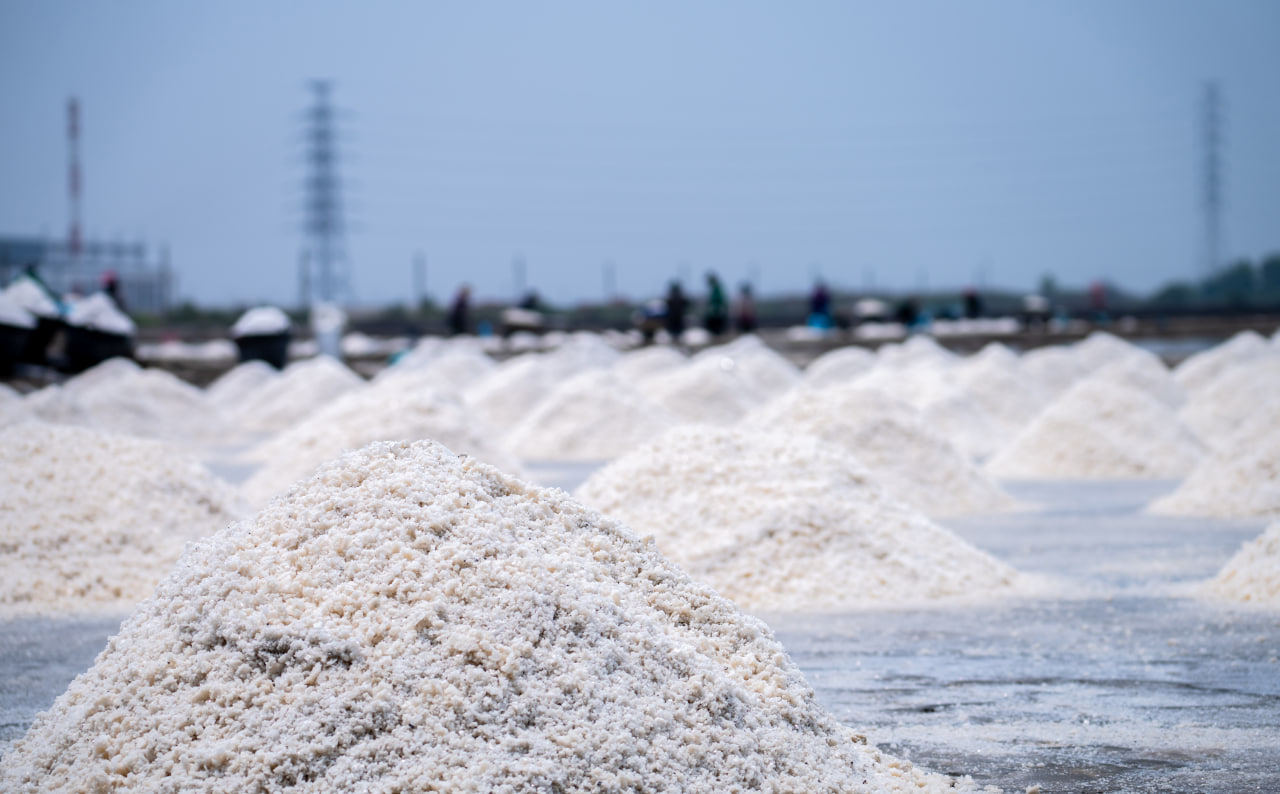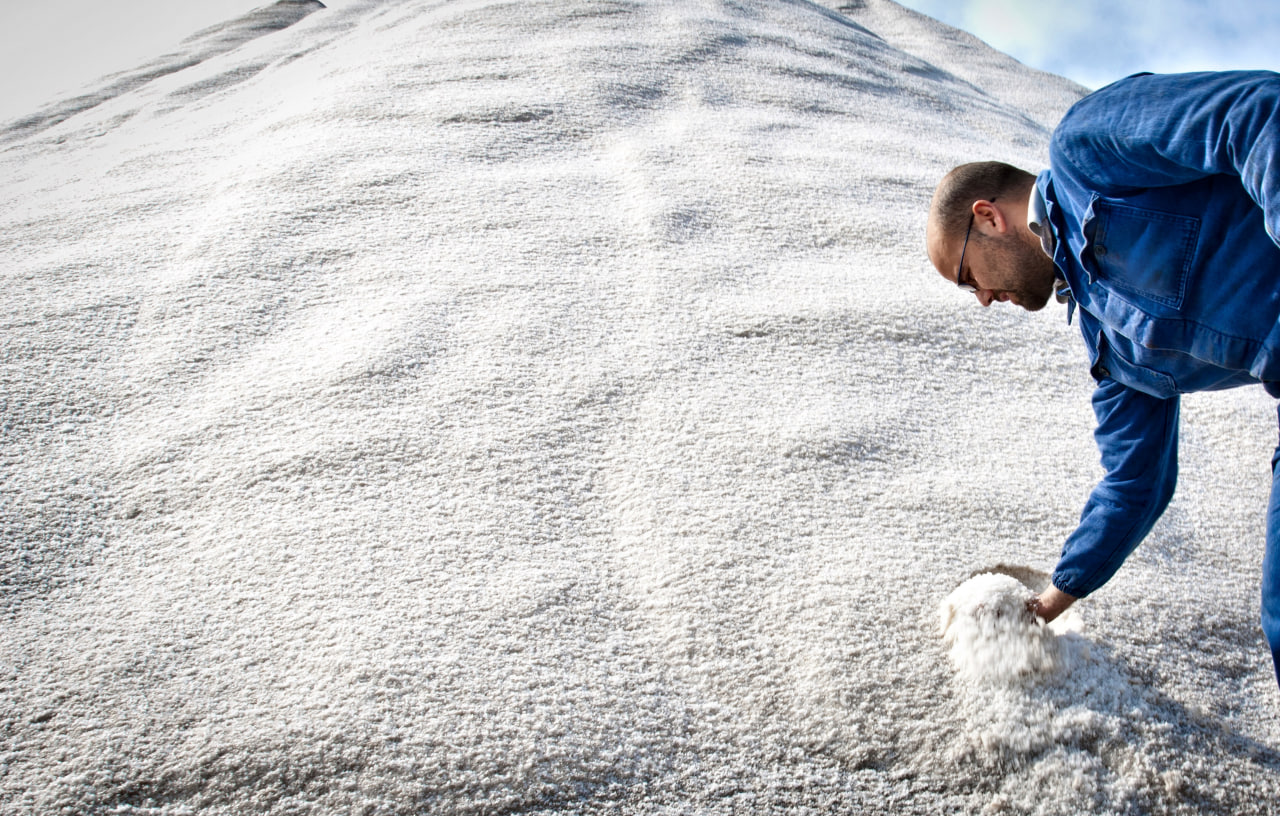Introduction
Mineral salts—from rock salt and halite to specialty industrial grades—are essential raw materials across multiple industries worldwide. In recent years, attention has turned to Iranian mineral salt, renowned for its abundant reserves, purity, and value-added processing. Notably, demand from two of the world’s largest growth economies—India and China—is increasing steadily.
This blog examines the drivers behind this trend, the advantages Iran holds, and the strategies stakeholders are using to build and sustain market share in these key markets.
What Is Mineral Salt?
Mineral salt refers to naturally occurring salt extracted from underground mines (rock salt) or saline lakes, then processed to remove impurities. It’s used far beyond table salt—serving industrial, chemical, pharmaceutical, and culinary sectors.
Key applications include:
Chlor‑alkali production (chlorine, caustic soda)
Water treatment and softening
Linking agents in rubber and textile industries
Food-grade uses (when processed to remove heavy metals)
De-icing and dust suppression (primarily rock salt)
Because of its wide industrial usage, mineral salt is often traded in bulk (1-ton jumbo bags, 25–50 kg sacks) and must meet several regulatory quality standards.
Why India and China Are Important Markets
📈 1. Growing Industrial Demand
China remains the world’s largest consumer of industrial salt, driven by petrochemicals, garment dyeing, food processing, and de-icing.
India is expanding rapidly in water treatment plants, food processing, and chemical production—all sectors reliant on industrial-grade mineral salt.
🌍 2. Shift Toward Regional Supply Chains
Both countries aim to diversify away from traditional suppliers (e.g., Pakistan, Australia, the US). Geographic proximity, combined with Iran’s cost-effective production, make it an exciting alternative.
💰 3. Cost Sensitivity
Indian and Chinese buyers seek competitive pricing—where Iran’s lower extraction and labor costs offer compelling value. When coupled with rising domestic costs in other suppliers, Iran’s positioning strengthens.
Strengths of Iranian Mineral Salt
✅ A. Massive Reserves and Diverse Sources
From the Dasht-e Kavir salt plains to the rock salt mines in Qom and Semnan, Iran has an estimated multi-billion-ton reserve base, offering high-purity sodium chloride suitable for industrial use.
✅ B. Competitive Production Costs
Low energy prices, local labor, and simple mining techniques lead to favorable cost structures compared to global competitors.
✅ C. Quality and Gradation
With modern processing, Iranian producers can supply:
Rock salt (1–5 mm)
Fine salt (0.5–1 mm)
Industrial-grade salt (washed/dried to 95–98% sodium chloride)
These grades match key usage categories in Indian and Chinese industries.
✅ D. Strategic Geographic Access
Iranian salt can be shipped to major Chinese ports like Tianjin or Shanghai and Indian ports such as Mumbai or Kandla within 10–15 days via the Indian Ocean and Arabian Sea corridor—offering faster delivery than trans-Pacific or overland routes.
Market Drivers in India and China
| Country | Demand Growth Factors |
|---|---|
| China | Petrochemical growth, environmental regulations pushing water recycling, winter de-icing |
| India | Municipal water infrastructure projects, increased packaged food consumption, affordable housing boosting cement/textile industries |
In both countries, industrial infrastructure planning continues to highlight salt-based applications—keeping demand healthy.
Export Requirements & Quality Standards
Iranian exporters targeting these markets must ensure:
Analysis certificates showing sodium chloride, moisture, heavy metal content.
ICP‑MS testing to verify lead, arsenic, mercury (< 3 ppm).
ISO 9001 / HACCP compliance, especially for food‑grade or water-treatment salts.
Packaging & labeling compliance, with bilingual information (English + Simplified/Traditional Chinese or Hindi).
Logistics compliance, including fumigation, phytosanitary or NOC documentation as needed.
Meeting these standards allows access to municipal tenders, petrochemical buyers, and food processing clients in both markets.
Logistics Routes & Shipping
To China:
By sea from Bandar Abbas or Chabahar → Karachi or Mundra → transshipment to Chinese ports
By rail/transit overland via Central Asia (e.g., Iran–Turkmenistan–China rail corridor)
To India:
Sea routes from southern Iranian ports → Mumbai/Kandla/Chennai
Land transit via the Iran–Pakistan border when diplomatic corridors permit
Key logistical priorities include:
Large-volume bulk (jumbo bags) or containerized cargo
Hazard-free loading with moisture protection
Partnerships with freight forwarders in Mumbai, Tianjin, and Ningbo
Competitive Landscape
| Supplier | Advantages | Challenges |
|---|---|---|
| Iran | Cost, proximity, quality | Sanctions logistics, payment issues |
| Australia | Excellent purity | Long shipping times, higher cost |
| Pakistan | Same route, lower cost | Political volatility, quality variation |
| Germany/Poland | Safety/brand perception | High cost, transit delays |
Iran’s niche lies in offering industrial-grade, cost-effective, sustainable supply with acceptable quality and faster delivery to India and China.
How Iran Can Expand Market Share
1. Form Regional Export Alliances
Pooling resources among local producers to standardize quality, packaging, and share volumes improves attractiveness.
2. Obtain Certifications
ISO 9001, ISO 14001, OHSAS 45001, and, for food-level use, BRC or HACCP certifications.
3. Create B2B Digital Presence
Dedicated, SEO-optimized websites in English, Mandarin, and Hindi; listings on platforms like Alibaba; China’s Made-in-China; India’s IndiaMART.
4. Attend Trade Shows
China International Salt Industry Fair (Shanghai)
India Water-Expo & Conference (Mumbai)
Iran Mines & Mining Equipment Expo with Chinese/Indian delegation incoming
5. Pilot Shipments
Start with smaller test batches to build trust, ensure customs clearance efficiency, and collect quality feedback.
6. Explore Domestic Partnerships
Partner with Indian and Chinese logistics companies to shorten the “last mile” and provide integrated supply solutions (freight + packaging + local delivery).
Challenges & Mitigation Strategies
Navigating sanctions & banking restrictions — Use local CNY/INR trade channels, barter agreements, or third-party trusted banks.
Variable quality standards — Implement centralized testing facilities with annual audits.
Forex volatility — Set contracts in stable currencies (USD or EUR) and use hedging tools.
Customs delays — Engage licensed local clearing agents and pre-clear shipments where possible.
Case Study: Iran → China Industrial Salt Pilot
In late 2023, an exporter in Kerman Province executed a pilot shipment of 5,000 tons of industrial-grade salt to a Chinese petrochemical plant near Tianjin:
Purity: 97% sodium chloride
Packaging: 1-ton FIBC (bulk bags) in 20’-GP containers
Outcome: After successful delivery in 18 days with full documentation, the buyer placed a repeat order of 15,000 tons/year
This pilot established a blueprint for further scaling.
Future Outlook
With global industrial salt demand forecasted to grow at ~3–4% annually—especially in Asia—Iran has a window of opportunity. By:
Upgrading industrial salt to specialized or high-purity grades
Signing medium- to long-term contracts with buyers
Building a reliable, traceable supply chain
Iran can capture 5–8% of India’s import quota and expand into China’s growing petrochemical corridors within 5 years.
Conclusion
The rising demand for mineral salt in India and China is a strategic opportunity for Iran. With its resource base, cost efficiency, and logistical options, Iranian exporters can position themselves as reliable, competitive suppliers.
Success will come through certified quality, effective branding, and smarter trade facilitation. With coordinated efforts—both public and private—Iran can meaningfully increase its industrial mineral salt share in the world’s largest emerging economies.
Call to Action
Are you an industrial buyer, logistics partner, or investor interested in reliable Iranian mineral salt supply for India or China?
📩 Let’s connect to discuss tailored pricing, quality-certified batches, and packaging options for your market.




